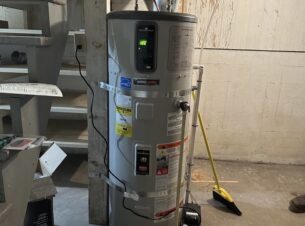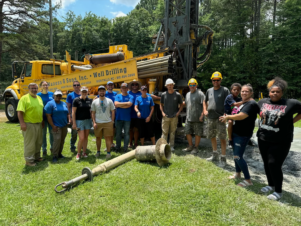Calves play a crucial role in managing the flow of steam and hot water in various systems. They are designed to withstand high temperatures and corrosion, making them essential components in industrial and residential settings. This article explores the different valves used for steam and hot water.

Stainless steel ball valve with PTFE seal suitable for steam
Different valve types for hot water and steam
Solenoid valves
Solenoid valves are used in both hot water and steam systems to control fluid flow. They offer fast response times, precise flow control, and durability in challenging conditions. Their compact design and low maintenance needs make them ideal for various industrial and commercial applications.
Globe valves
Globe valves offer excellent throttling capabilities and precise flow control. These valves have a spherical body and a movable plug or disc, which regulates fluid flow by varying the opening between the plug and the valve seat. In steam applications, globe valves enable fine-tuned control over flow rates and pressure, making them ideal for processes that require accurate adjustments. In hot water systems, they provide reliable shut-off, minimizing water leakage and optimizing flow control. Globe valves are commonly used in heat exchangers, steam distribution systems, and other applications where precise flow control is essential for efficient operation.
Gate valves
Gate valves are known for their low-pressure drop and efficient shut-off capabilities. These valves utilize a gate or wedge-shaped disk that moves up and down to control the flow of fluids. In steam applications, gate valves offer minimal resistance, making them suitable for high-flow systems. When fully open, they provide a straight-line flow, ensuring efficient steam distribution. In hot water systems, gate valves deliver reliable shut-off, preventing water leakage and enabling precise flow control. Their robust design and simple operation make gate valves valuable for various industrial processes, providing reliable and efficient fluid control in both steam and hot water applications.
Ball valves
Ball valves are widely used in both steam and hot water systems due to their excellent shut-off capabilities. These valves use a rotating ball with a hole through its center to control the flow of fluids. For steam applications, ball valves provide a quick and reliable shut-off, preventing steam leakage. In hot water systems, they offer fast and efficient flow control, minimizing water wastage. Their simple design and durable materials make ball valves a popular choice for various industrial and commercial applications, providing reliable performance and ease of operation in both steam and hot water systems.
Butterfly valves
Butterfly valves feature a disc that rotates within the valve body to regulate fluid flow. In steam applications, butterfly valves offer fast shut-off capabilities, making them suitable for applications where quick isolation is required. In hot water systems, they provide reliable flow control, minimizing water waste and energy consumption. Butterfly valves are particularly advantageous for larger pipelines due to their compact design, resulting in lower installation costs.
Check valves
Check valves are essential components used in steam and hot water systems to prevent backflow and maintain flow in one direction. Check valves are commonly used in boiler feedwater systems, steam distribution lines, and hot water circulation systems. Their simple design and reliable functionality make check valves crucial for maintaining system integrity and safety in both steam and hot water applications.
Steam and hot water valve features
The typical features of valves used with steam and hot water include:
- Material compatibility: Valves for steam and hot water applications should be made from materials that can withstand the high temperatures and pressure conditions. Common materials used include stainless steel, brass, bronze, ductile iron, and cast iron.
- Sealing mechanism: Valves should have reliable sealing mechanisms to prevent leakage and ensure tight shut-off when required. Seals and gaskets made from materials like PTFE (Teflon) or graphite are commonly used for their heat-resistant and sealing properties. Graphite is especially used in high-temperature applications due to its excellent thermal resistance. While not as flexible as other materials, metal seals provide a very high level of sealing integrity.
- Pressure rating: Valves must be rated to handle the specific pressure levels of steam and hot water systems to prevent failures and ensure safe operation.
- Temperature range: The valves should be capable of functioning effectively within the temperature range of the steam and hot water applications without losing performance.
- Flow control: Smooth and precise flow control is essential for maintaining efficient operation and avoiding pressure fluctuations in steam and hot water systems.
- Low pressure drop: Valves with low pressure drop are preferred to minimize energy losses and ensure energy-efficient operation in high-flow systems.
- Corrosion resistance: Valves used in hot water systems should be resistant to corrosion caused by water or water treatment chemicals.
- Durability and reliability: Valves should be designed to withstand continuous operation and harsh conditions in industrial environments.
Conclusion
Selecting the right types of valves for steam and hot water applications is paramount for ensuring the safe and efficient operation of industrial systems. Each valve type possesses unique features that cater to specific requirements, such as shut-off capabilities, flow control, and resistance to high temperatures and pressures. Ball valves excel in quick shut-off, while gate valves provide low pressure drops. Globe valves offer precise throttling control, and butterfly valves are suitable for larger pipelines. Check valves prevent backflow, and safety relief valves protect against overpressure situations. Understanding these valve types and their features empowers engineers and professionals to make informed decisions, optimizing system performance, energy efficiency, and safety in the complex world of steam and hot water applications.




Join the conversation: